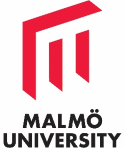Scandia introduces: The Astonishing, Supernatural, and Spectacular
The Fantastic and Historical Studies
DOI:
https://doi.org/10.47868/scandia.v91i1.27993Keywords:
the fantastic, fantastika, knowledge paradigms, cultural encounters, collective memoryAbstract
This article explores the role of the fantastic in historical research while emphasizing its significance for understanding historical contexts and changes. The fantastic – manifested through stories, images, artifacts, texts, and bodies – serves as a lens for examining how knowledge of the world was perceived in different periods. Representations of the fantastic, often linked to taboo subjects and transgressive norms, create group cohesion and offer ways to make sense of the world. By studying the forms and contexts of the fantastic, researchers can apply historical theories in order to understand past worldviews and knowledge paradigms.
The article argues for the relevance of the fantastic as a legitimate subject of historical research by demonstrating its public and comprehensible nature, its role in evoking strong emotions, and its ability to convey complex ideas and experiences. Examples from Swedish research illustrate how the fantastic can reveal insights into power structures, cultural encounters, and collective memories, thus making it a valuable tool for historical analysis. The fantastic is never incomprehensible to those affected; rather, it creates recognition and group fellowship and offers opportunities for action. This may include mobilizing the masses for revolution, making colonial processes more manageable, or concretizing the infinite creation of God. By examining the forms and contexts of the fantastic, researchers can apply historical theories regarding conditions and changes that were internalized in worldviews and understandings of the world, where multiple knowledge paradigms often coexisted.
Furthermore, the article highlights the importance of the fantastic for understanding knowledge practices, such as the interplay between science, religion, and magic in early modern Europe. It examines how the fantastic can reveal internalized assumptions about the world and how these assumptions change over time. The study of the fantastic in historical contexts offers insights into the ways in which people made sense of their world and the knowledge paradigms they used. Finally, the article addresses the role of the fantastic in collective memory and trauma. It explores how the fantastic can bridge the gap between the comprehensible and the incomprehensible, particularly in the context of traumatic memories such as the Holocaust. The fantastic allows for representing complex and often painful experiences in a way that can be both meaningful and accessible to contemporary audiences.
Downloads
Published
Issue
Section
License

This work is licensed under a Creative Commons Attribution-NonCommercial 4.0 International License.





